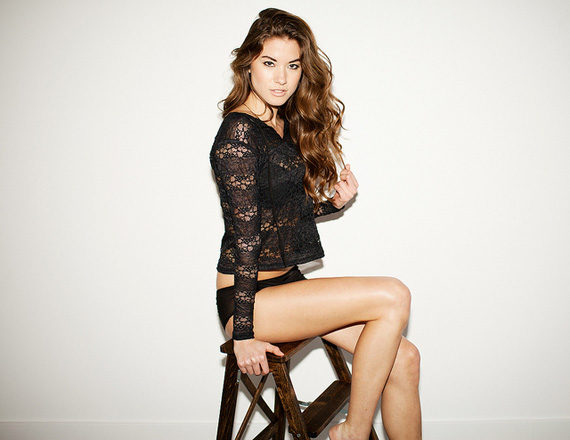In case you’re not familiar with the term, TFP stands for Time For Prints, and it’s generally the way up and coming models and up and coming photographers eek out a toe-hold in the marketplace. The model is donating his or her time, and the photographer is supplying prints the model can use in their portfolio. It’s an arrangement that’s been around as long as photography.

Photo by Mike Monaghan.
It’s a fluid and dynamic relationship. At a certain point models stop taking TFP jobs and change their status to Paid Work Only (PWO). Photographers who gain some standing in the profession will likewise eventually stop scheduling TFP work and start charging new models for portfolio shots.
There’s also an expectation that if a model has done TFP work for a photographer in the past, that they will be considered first for paying jobs the photographer lands in the future. That’s an unwritten rule to be certain, but it’s a wise photographer who abides by it.
From the standpoint of the photographer, there’s a definite downside to working with TFP talent. Since they’re not being paid, there’s not always a lot of motivation to show up. In fact, depending on who the photographer is, the show rate can be as low as 30 percent. That means either two out of three times you organize a TFP project your talent isn’t going to show, or you have to invite three models and hope to get one who actually shows up. That also means being prepared to shoot all three in the unlikely event they all show up.

Photo by Mike Monaghan.
That’s the reality of TFP. For students in school, finding free talent is rarely a problem. Once you get out, it becomes more of an issue. Everyone is so busy these days, time is the commodity in chronic shortage. With the expenses associated with even showing up for a TFP shoot, it may be time to consider paying your talent if you haven’t done so before. You’ll be amazed at the difference it makes in attendance and punctuality.
A good rule of thumb is if you need a model release for commercial use, then pony up a little cash for consideration. It will also make a difference if the job is for a publication where new models might get something called a “tear sheet” for their portfolio. Tear sheet started out as models tearing out the pages from magazines with their photos and has since grown to include internet articles, so don’t forget to print off a copy and send it to your talent.

Photo by Brian James; ISO 200, f/1.8, 1/160 exposure.
Most name models have what’s called a “day rate.” The really big names will have a laundry list of extras they need at the time of the shoot. That may fly in New York or Los Angeles, but in most areas it won’t be that defined. You can post your jobs and the rate you’re paying in some place like Model Mayhem and see if the responses you get meet your expectations. You can always go higher on the pay rate until you start attracting the kind of talent you’re seeking.
Like with anything where other people are involved, there will be the occasional snub, personality conflict, or difficult shoot. Consistent success will be easier if you pay a decent day rate, are clear about your expectations, and insist on professionalism.
About the Author:
Peter Timko writes on behalf of Proud Photography, which offers online photography courses on a variety of subjects.
Like This Article?
Don't Miss The Next One!
Join over 100,000 photographers of all experience levels who receive our free photography tips and articles to stay current:






yes
tfp is affordable way for both party
Greetings! Interesting article. In my 20+ years of modeling (in NYC and Chicago) I have never once heard this term! Unless it’s very very new, or very very old. Or only used on the West Coast. My agents (Elite/Ford in NYC, Elite/Stewart in Chicago) always used the term “free test”. Same principle and outcome, of course.
Also re) the “unwritten rule” of considering the TFP models for paying jobs? I didn’t once see this happen – save for a couple hand modeling jobs where they simply needed excellent hands and couldn’t be bothered with a casting. There are usually too many cooks in the kitchen when it comes to jobs – the photographer sometimes has very limited say in who actually gets hired; you also have to contend with the client, the ad agency, the art director… to name a few of the players. Also sometimes it takes time for photographers to get to that point where they are established and getting jobs, and models may not look the same as they did 6-12-24 months ago!
Anyhow, just my two cents. Love PictureCorrect! :) Thanks for all the great articles!
Working with a professional model is wonderful, they know how to move and emote. They make my work a joy